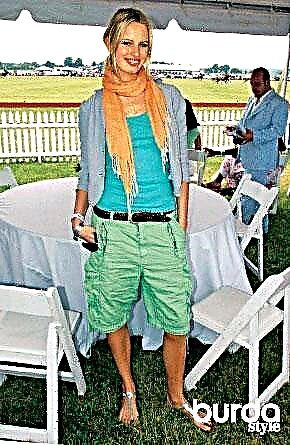How to cut and sew from terry cloth, how to wash products from it and other tips and tricks for working and caring for terry cloth.
Terry cloth, it is (colloquial) mahr, it is also frote - a material whose surface is covered with small loops. Due to the loops, the terry cloth has a volume, absorbs water well, keeps heat, pleasant to the touch. Terry cloth is made both from natural raw materials (cotton, linen, bamboo), and from mixed. The loops can be either on one side of the fabric, or on both, the fabric itself can be thicker or thinner. Towels, bedding, bathrobes, baby clothes, pajamas, slippers, etc. are sewn from the frote.
How to sew a terry towel and a bag bag for toys
Here are the tips and tricks to help you work with terry cloth:

1. Wash and dry the terry cloth before work.
Terry cloth when washing can shrink, and the fabric is more voluminous and loose, the shrinkage can be more. Wash the cloth with a little detergent and use conditioner. The temperature is not very high, a maximum of 40-60 degrees. Spin - no more than 800 revolutions per minute. Due to the volume, the fabric dries for a long time, it is better to dry it with good air access. Since often the edges of the terry cloth crumble strongly, before washing you can process them on an overlock or zigzag.
2. How to cut from terry cloth
Loops of terry cloth can have a direction, like a pile.If this is true for your fabric, pay attention to the location of the details when cutting.
Get ready for a lot of debris during the cutting process. Well stock up with a brush to sweep off crumbled scraps of thread.
3. Work on the edges of the parts.
Due to the fact that the edges of the terry cloth crumble strongly, it is better to process the edges of all parts on an overlock or zigzag.
4. Choose a strong needle
If you are sewing, for example, a terry dressing gown or other product that involves stitches across several layers of terry cloth, it is better not to use too thin needles. As a rule, the universal needle NM 90 is suitable for working with terry cloth.
5. How to process the edges of terry products
First of all, this question arises when sewing towels from terry cloth. There are several options:
- tuck and stitch (suitable for thin terry fabrics, too bulky does not always look good);
- process the edges on the overlock / zigzag (a simple way, but the result may not be the most formal);
- to process the edges with a purchased oblique inlay (it is better to decorate the inlay before work so that it does not subsequently sit down, pulling off the edges of the towel);
- to process inlay or oblique inlay made independently (the method is good in that you can choose the width of the inlay that is needed - for a voluminous terry, a wider inlay may be needed).
There is also such a method, suitable for processing the long sides of terry towels. Along the long edges, lay 2-3 stitches with small stitches at a distance of 2-3 mm from the edge. From the edge, stretch the threads forming the loops.Process the resulting smooth edges without loops on an overlock or inlay.
DIY bath towel and terry mitten for the baby
How to care for terry products:

1. How to wash terry cloth
Basic recommendations - see paragraph 1 of the list on working with terry cloth. Some more tips:
- do not wash products from terry cloth along with things on which there are hooks, zippers, buttons - so the loops of terry will remain intact;
- do not use water saving modes - because of the looseness and volume, the terry cloth requires a lot of water for a good wash and rinse;
- when washing, you can add a spoonful of salt to the detergent - this will help the terry cloth to remain fluffy;
- Also, things from terry cloth can be soaked after washing in a weak salt solution for half an hour, and then rinse well.
2. Is it possible to iron things from terry cloth?
It is better not to iron the terry cloth. But you can steam it.
3. What to do if the loop of terry cloth is stretched?
If a puff forms, carefully cut the elongated loop (this is most conveniently done with small scissors).
Frote, or terry
Photo: indiesew.com, naturesfabrics.com, wazoodle.com



